
Weeds in the garden are a nuisance in and of themselves, but recognizing whether they are poisonous is not always as easy as you might think. If it is poisonous weeds, you should act quickly and remove them.
In a nutshell
- poisonous weeds are survivors
- Be sure to dig up the roots
- remove only with protective clothing
- dispose of in household waste
Table of contents
- Identify poisonous weeds
- Control poisonous weeds
- frequently asked Questions
Identify poisonous weeds
Annual mercury (Mercurialis annuals)
The annual dog's mercury grows as a male and female plant. However, both sexes are not necessarily required for seed formation.
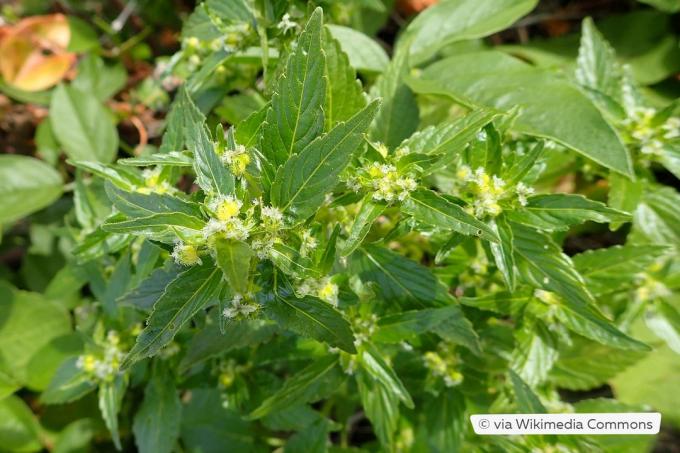
Characteristics:
- male flowers: greenish-yellowish, spike-shaped (protrude far beyond the leaves)
- female plants: small, greenish-yellowish clusters in the leaf axils
- Flowering time: June to autumn
- Growth height: 20 to 50 centimeters
- light green, narrow, serrate leaves
A notice: The annual mercury roots up to 50 centimeters deep. The plant throws its seeds up to four meters away.
Spotted hemlock (Conium maculatum)
The spotted hemlock likes to grow on hedges and fences. The biennial herbaceous plant can be used for be deadly to humans.
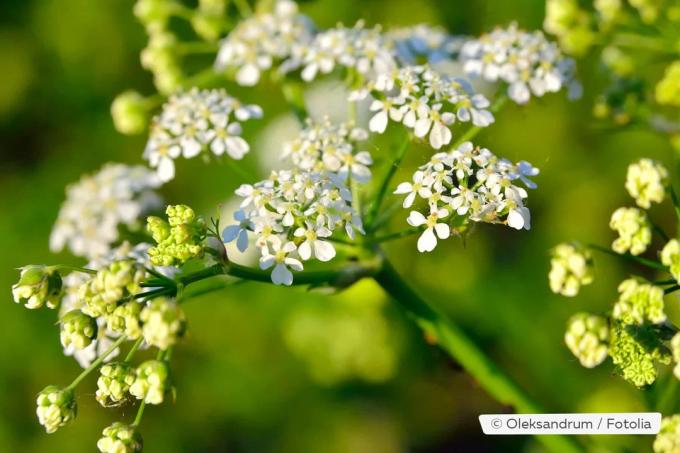
Characteristics:
- white umbel flowers
- smells like mouse urine
- Growth height: 100 to 200 centimeters
- fringed leaves; similar to those of parsley
Common datura (Datura stramonium)
The common or White datura belongs to the Solanaceae(Solanaceae). Its flowers only open when it gets dark.
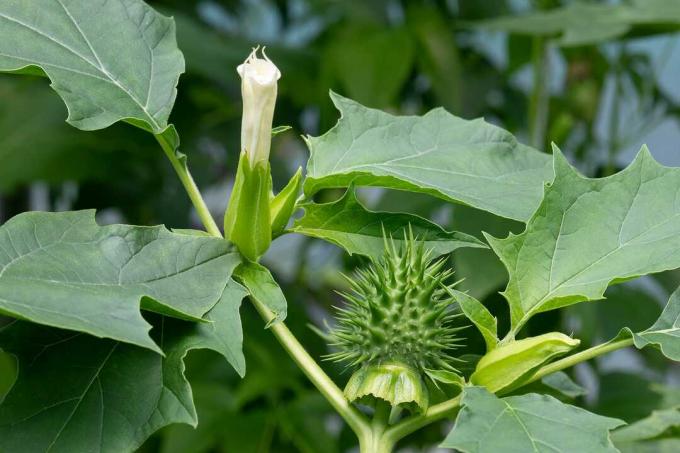
Characteristics:
- sweetly scented, white funnel-shaped flowers from June to October
- prickly, ovoid capsules between July and October
- Growth height: 30 to 200 centimeters
- Leaves and stems give off an unpleasant smell
- serrated leaves, hand-sized
common ragwort (Senecio vulgaris)
The common ragwort is the cosmopolitan among the poisonous weeds. It grows on all soils in the Vegetable patch and can bloom all year round. In addition, the common groundsel, as the weed is also called, survives the winter in Germany without any problems.
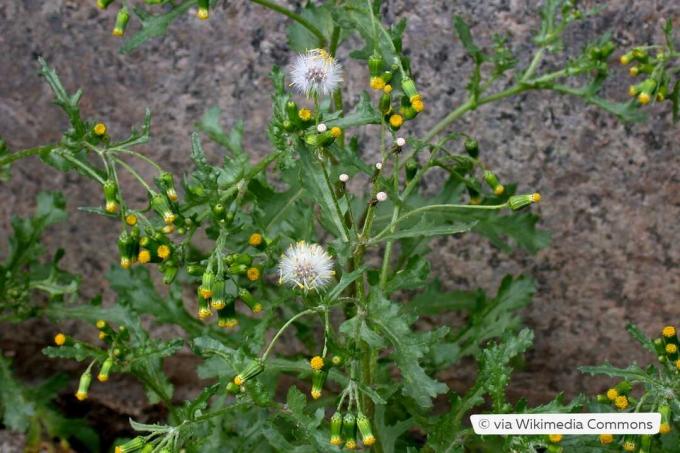
Characteristics:
- small yellow flowers
- Growth height: 10 to 40 centimeters
- leaves: slightly hairy, dentate or cleft
Tip: Once the common ragwort has formed seeds, the flower heads look like those of the dandelion ("dandelion").
Ordinary Easter Lucia (Aristolochia clematitis)
The Easter Luzei grows creeping. The rootstock of the plant is heavily branched. The proportion of toxic ingredients is highest in the underground parts of the plant.

Characteristics:
- light yellow, bag-shaped flowers from May to June
- two to eight flowers stand together
- Growth height: 30 to 100 centimeters
- heart shaped leaves
- slightly fruity smell
Ordinary soapwort (Saponaria officinalis)
The common soapwort forms strongly branched, underground runners. The rhizomes can be as thick as a finger.
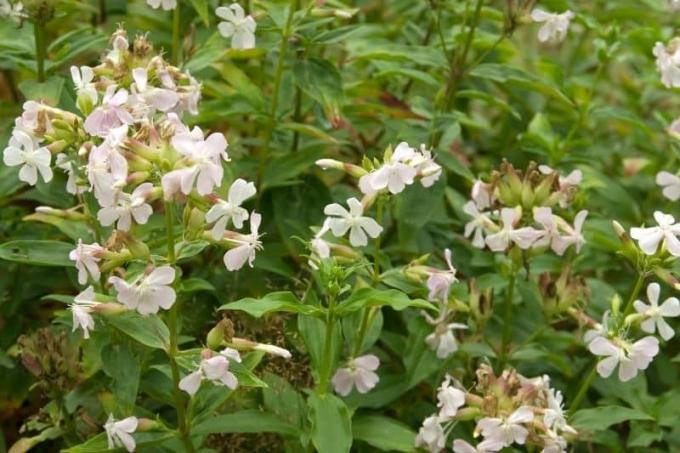
Characteristics:
- white to pink flowers from June to October
- Growth height: 30 to 80 centimeters
- leaves: lanceolate. 5 to 10 centimeters long
- stem: mostly unbranched, softly hairy
Ragwort (Jacobaea vulgaris)
The Ragwort spreads with preference in the natural garden. In the first year it appears as a rosette of leaves. From the second year it develops yellow flowers.
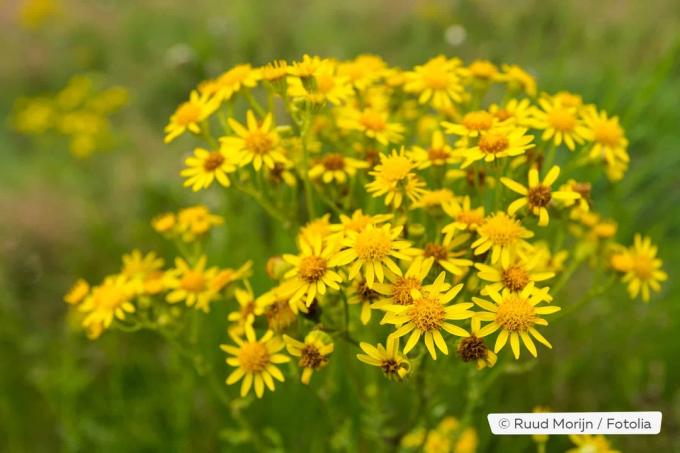
Characteristics:
- bright yellow flowers from June to July
- reminiscent of small daisies in appearance
- Involucral leaves tipped with black
- Growth height: 30 to 100 centimeters
A notice: A single plant of ragweed produces up to 3,000 seeds. They are spread by the wind and can germinate for many years.
Creeping buttercup (Ranunculus repens)
Creeping buttercup spreads rapidly through its creeping stolons. Although it is considered slightly poisonous, it should only be fought with gloves.
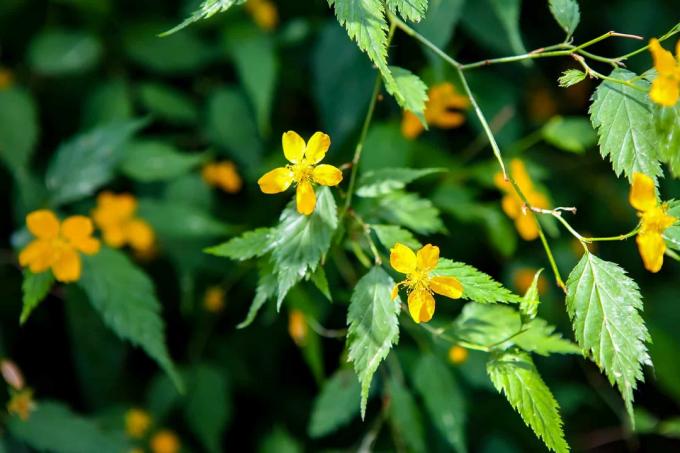
Characteristics:
- golden flowers from May to August
- Growth height: 10 to 50 centimeters
- pinnate leaflets
- roots up to 50 centimeters deep
Giant Bear Claw (Heracleum mantegazzianum)
The giant hogweed, also known as Hercules perennial, is not only poisonous, but also crowds out other plants. If the skin comes into contact with the plant sap in sunlight, phototoxic reactions such as reddening of the skin, burns and blistering occur.
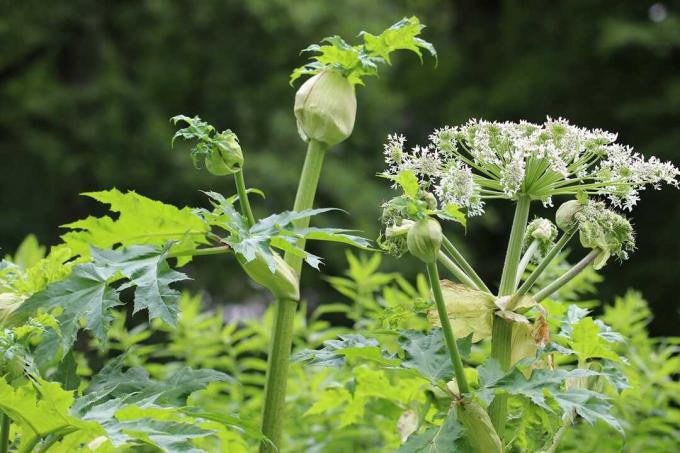
Characteristics:
- Umbrella-like umbels (up to 50 centimeters in diameter) with white individual flowers
- Growth height: 250 to 400 centimeters
- medium stem: about 10 centimeters thick; Red stain
- Leaves: Three or more parts, strongly toothed, up to 100 centimeters in size
A notice: Mowing the hogweed is not enough to get rid of the poisonous weed. The plant can sprout again several times a year.
Black Henbane (Hyoscyamus niger)
Black henbane grows once or twice a year. In the case of one-year-old specimens, only a rosette of leaves can be seen in the first year.
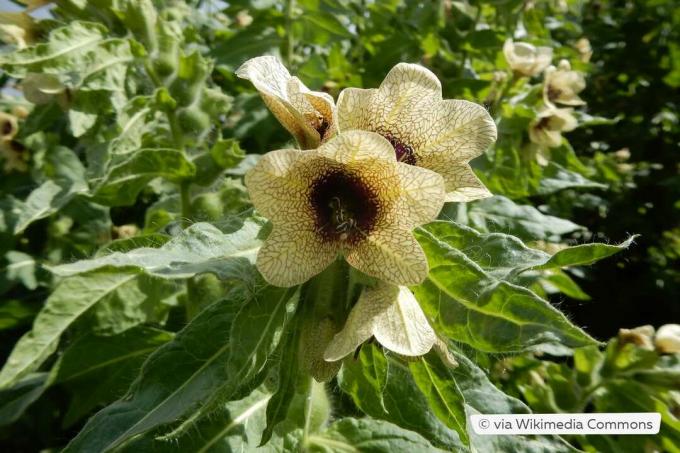
Characteristics:
- dark yellow funnel-shaped flowers appearing dirty from June to October
- Growth height: 30 to 60 centimeters
- sticky stem
- elongated, coarsely toothed leaves
- gives off an unpleasant smell
- roots up to 55 centimeters deep
Control poisonous weeds
Poisonous weeds are true artists when it comes to reproduction. They form innumerable seeds and/or repeatedly sprout from the roots. Some even develop new shoots if they end up on the ground or on the compost after weeding.
To stop the plague, do the following:
- cut off aboveground plant parts
- dig up roots
- remove creeping runners including roots
- collect cut and dug up plant parts in a sack
- also collect small root parts
- dispose of in household waste
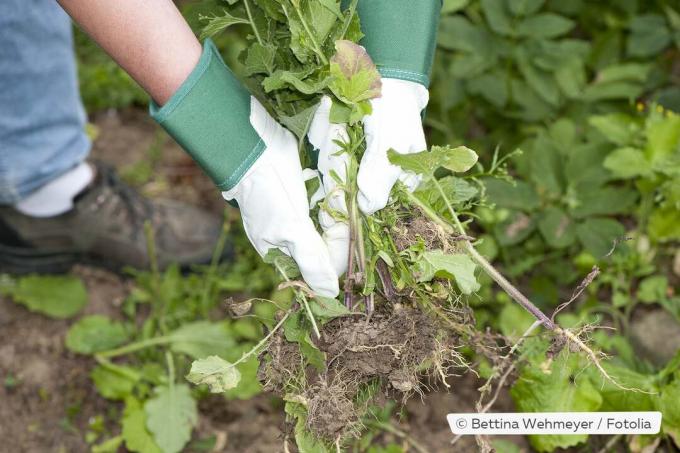
Tip: Ideally, you declare war on poisonous weeds before they have a chance to set seeds. If you have missed this point in time, you should check the garden regularly for new shoots.
For your own protection, wear when weeding and digging:
- working gloves
- long clothes
- solid shoes
- safety goggles
frequently asked Questions
Toxicity depends on the particular plant. For example, the creeping buttercup is considered slightly poisonous, while the black henbane can lead to death. Since the dose makes the poison, you should always exercise caution when handling poisonous weeds.
Symptoms of poisoning vary from plant to plant. Skin irritation, blistering, tachycardia or vomiting can occur. If you feel unwell during or after working in the garden, you should consult a doctor.
If the fight against poisonous weeds seems hopeless, you should consult a professional gardener.
